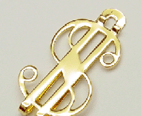Reconstructive surgery is a broad branch of surgery that involves procedures that help to change abnormal and damaged tissues or organs in order to restore their function and normal appearance. Even though most of the procedures are performed by plastic surgeons, this type of surgery differs from cosmetic one. The goal of cosmetic procedure is to change features that a patient is not happy about and features that do not match the ideal ones. Reconstructive surgery procedures are done on damaged parts of the body, either due to birth defects, development deterioration, injury, disease, tumors or infection.
More than one million reconstructive surgery procedures are done annually. The aim of this type of plastic surgery is to help patients at all ages. Young children may need reconstructive surgery due to development abnormalities or birth defects. Young adults may undergo such procedures caused by injury, disease or infection. And older patients sometimes need reconstructive procedures to improve problems due to aging.
All reconstructive procedures are performed to restore function of the damaged structures of a human body. Moreover, they are also performed to improve the looks. Even though perfection cannot be obtained with any type of surgery, modern reconstructive surgery techniques can do miracles.
Candidates for reconstructive surgery
Patients, who may need to have reconstructive surgery , are divided into two general groups. The first one includes patients who need this type of surgery due to birth defects, such as cleft-lip, palate or hand deformities, extra or absent fingers, birthmarks and many more. All these defects are usually improved in an early childhood, so the decision is made by parents of the patient.
The second group involves patients who need reconstructive surgery development abnormalities, caused by injury, tumor, infection or any other disease. This group also includes patients, who need to undergo a reconstructive procedure to change abnormalities caused by aging process A few examples of such changes are sagging breasts, drooping eyelids, tumors due to old age and others.
In most of the cases function of an organ is restored, and this is the main goal. In addition external looks are also being enhanced.
Reconstructive surgery
In childhood most of the reconstructive procedures are performed to reconstruct abnormalities due to birth defects. Most common surgeries are otoplasty, rhinoplasty , oral cavity surgery to restore cleft-lip and palate, hand deformities, eye deformities, different inborn tumors that interfere with function.
Later most common cosmetic procedures are wound treatment, reconstructive procedures to restore function and appearance of paralyzed organs, breast reconstruction procedures after breast cancer, tumor surgery, breast reduction , blepharoplasty to improve drooping eyelids.
Laser surgery is one of the most modern treatments in reconstructive surgery. With the help of different types of lasers, surgeons can safely remove different birth marks, benign or malignant skin growths, treat scars. Laser treatment is safer; it minimizes bleeding and leaves smaller, less noticeable scars.
Wound treatment is one of the most common reconstructive procedures that are performed by a plastic surgeon. If a wound has straight edges on the skin surface it is usually cured with direct closure, taking care to leave the scar as unnoticeable as possible.
Wide wounds are treated with the use of skin grafts. A kin graft is a piece of healthy skin taken from one area of the body to cover the skin defect in another area. Plastic surgeons try to match the skin of a wound as much as possible in color, texture, elasticity and so on. There are three main types of skin grafts: split-thickness, full-thickness and composite ones. Each of them is used to cover different types of skin defects.
More complicated techniques of wound treatment are tissue expansion and flap surgery. Tissue expansion may seem uncomfortable for patient temporarily but it has a lot of advantages: it provides with more matching skin, less visible scars, lower risk of losing a skin graft. Whereas flap surgery involves microsurgical techniques to close wounds where not only skin but also fat tissue, muscles were lost and to restore the function of the organ.
Reconstructive surgery specialists
Specialists from different branches of surgery perform reconstructive procedures. These are dental surgeons, who reconstruct different abnormalities of oral cavity and face. Facial surgeons treat facial tumors, wounds and different birth defects. Eye surgeons may improve drooping eyelids that interfere with vision. Orthopedic surgeons will restore function of a skeletal system.
Reconstructive surgery cost
Many reconstructive procedure costs are covered by health insurance. However, it depends very much on the type of health insurance and type of a procedure. If you are considering a reconstructive procedure, check with your health insurance whether they cover all expenses of a certain type of plastic surgery and also consult your doctor about it.
There are a lot of options to improve or restore function of a certain organ or structure. If you do not know whether a doctor can help you or not, do not hesitate to ask your health care professional to refer to a certain specialist.
 Plastic surgery is a big step in your life. The need for it is more of psychological nature. And this is no wonder, because even a small change in your appearance can strongly affect your inside.
Plastic surgery is a big step in your life. The need for it is more of psychological nature. And this is no wonder, because even a small change in your appearance can strongly affect your inside. Prices for
Prices for  Everyone knows that plastic surgeries and other
Everyone knows that plastic surgeries and other  Giving a birth is a gift that nature gave to women. Most women enjoy being pregnant, but for some of them body changes caused by pregnancy, childbirth and breastfeeding takes away the joy. Many women find that their tummy after childbirth became flappy (because of excess skin) and full of stretch marks; the breast after breastfeeding has lost its nice shape, also sometimes there are changes in skin pigmentation and etc. These changes may frustrate and depress a woman, because each woman one wants to look as attractive as she was before pregnancy. Well, if a woman wants to restore her pre-pregnancy form, there are some options to choose –
Giving a birth is a gift that nature gave to women. Most women enjoy being pregnant, but for some of them body changes caused by pregnancy, childbirth and breastfeeding takes away the joy. Many women find that their tummy after childbirth became flappy (because of excess skin) and full of stretch marks; the breast after breastfeeding has lost its nice shape, also sometimes there are changes in skin pigmentation and etc. These changes may frustrate and depress a woman, because each woman one wants to look as attractive as she was before pregnancy. Well, if a woman wants to restore her pre-pregnancy form, there are some options to choose –  People, who have unwanted hair in certain places of their body, know how frustrating it can be to choose the right method for hair removal. They are also aware of how much time and money it requires to get rid off unwanted hair. However, growing demand for good image and beautiful looks make people overcome all the trouble that hair removal brings. Fortunately, there are modern methods that people can choose to get rid off unwanted hair most probably for good.
People, who have unwanted hair in certain places of their body, know how frustrating it can be to choose the right method for hair removal. They are also aware of how much time and money it requires to get rid off unwanted hair. However, growing demand for good image and beautiful looks make people overcome all the trouble that hair removal brings. Fortunately, there are modern methods that people can choose to get rid off unwanted hair most probably for good. One of the most important functions of the breasts is breastfeeding. Therefore women, who wish and plan to have
One of the most important functions of the breasts is breastfeeding. Therefore women, who wish and plan to have